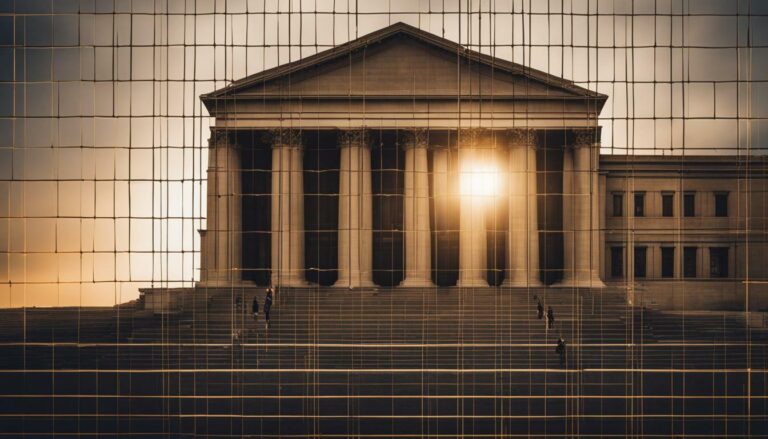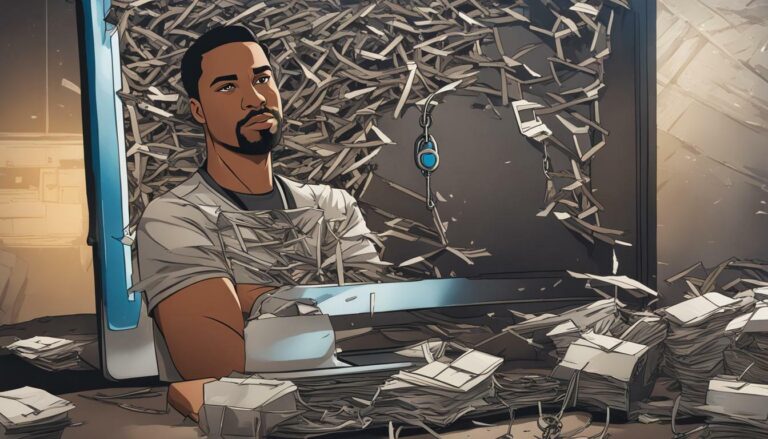Understanding Navigating Credit Repair After Natural Disasters

Natural disasters can have a significant impact on your credit, but by understanding how to navigate credit repair after such events, you can take control of your financial situation.
During a natural disaster, it can be difficult to pay bills and rely on credit cards. This can result in missed payments, increased debt, and a negative impact on your credit score. However, there are steps you can take to protect and rebuild your credit in the aftermath.
- Contact lenders for hardship options and negotiate flexible payment plans.
- Reach out to utility and service providers for assistance and flexible payment options.
- Seek special tax relief from the IRS if eligible.
- Monitor your credit regularly for inaccuracies or suspicious activity.
- Dispute any incorrect information on your credit report.
By addressing your immediate needs, such as accessing FEMA resources and contacting insurers, you can take the first steps towards recovering from a natural disaster. Additionally, don’t forget to contact mortgage companies and creditors, seek student loan forbearance if necessary, and be strategic with your financial resources.
Preparing for future natural disasters is also important. Be aware of your credit status, set up automatic payments to ensure timely bill payments, understand over limit rules, and prioritize expenses to minimize the impact on your credit in the event of another disaster.
In conclusion, navigating credit repair after natural disasters requires a proactive approach. Contact creditors early, explore your options, reprioritize expenses, and review your credit reports regularly. Consider utilizing credit monitoring or identity theft protection services to further safeguard your financial well-being. With a plan in place, you can focus on your immediate needs while protecting your credit for the long term.
🚨 TUIC Errors + Low Credit Score?
CreditScoreIQ helps you build credit faster by reporting utility bills to all 3 bureaus—while you dispute errors.
Start Building Credit Today →Steps to Protect Credit After Natural Disasters
Protecting your credit after a natural disaster requires proactive steps such as contacting your lenders, utility providers, and the IRS to explore options for financial relief. When a natural disaster strikes, it can be challenging to meet your financial obligations, which can then negatively impact your credit. However, taking the following steps can help you rebuild and protect your credit in the aftermath of a disaster.
- Contact Your Lenders: Reach out to your lenders as soon as possible to inform them of your situation and inquire about potential hardship options. Many lenders offer assistance programs or forbearance plans that can temporarily suspend or reduce your monthly payments.
- Reach Out to Utility Providers: If you’re struggling to pay your utility bills due to the disaster, contact your utility providers to discuss flexible payment options or payment arrangements. They may be able to provide you with temporary relief, preventing any negative impact on your credit.
- Seek Special Tax Relief: The IRS provides special tax relief for individuals affected by natural disasters. This includes extended deadlines for filing tax returns, claiming deductions, and making payments. Visit the IRS website or consult a tax professional to understand how the relief measures can benefit you.
By taking these steps, you can protect your credit from further damage and give yourself some breathing room to recover financially. Remember, it’s crucial to act promptly and communicate with your lenders and service providers to ensure you receive the assistance you need.
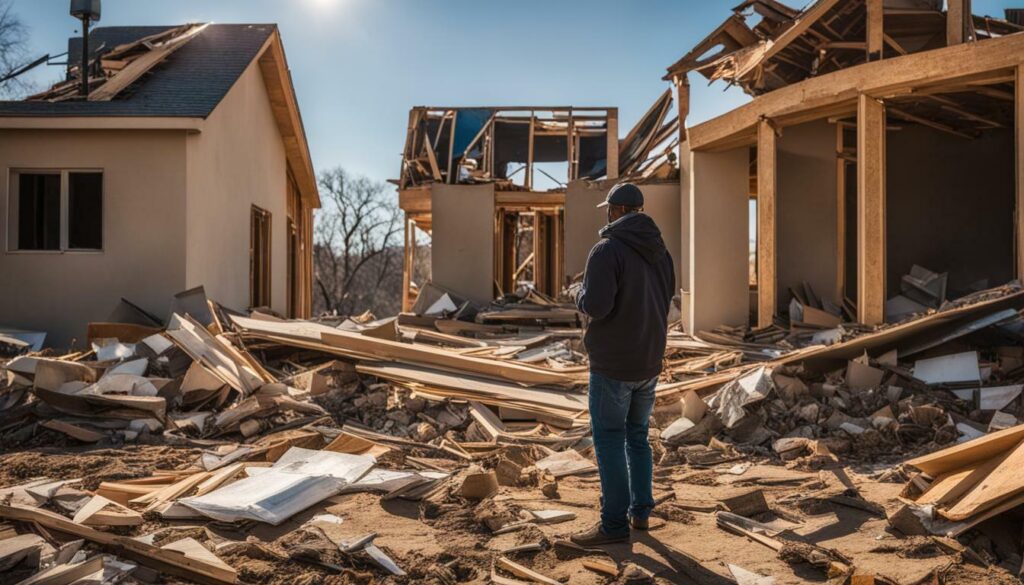
Rebuilding credit after a natural disaster is a gradual process that requires patience and perseverance. While immediate financial priorities may take precedence, it’s important to address your credit needs as soon as possible to prevent long-term consequences. Keep in mind that each person’s situation is unique, so it may be helpful to consult with a financial advisor or credit repair specialist for personalized guidance.
Why Credit Monitoring is Essential
In the aftermath of a natural disaster, monitoring your credit is crucial to identify any inaccuracies or suspicious activities that may have occurred as a result. Regularly reviewing your credit reports can help you catch errors early on and take the necessary steps to dispute them. Consider utilizing credit monitoring services that alert you to any changes or potential signs of identity theft.
| Benefits of Credit Monitoring | Credit Monitoring Services |
|---|---|
| Early detection of inaccuracies | Experian CreditWorks |
| Protection against identity theft | TransUnion Credit Monitoring |
| Alerts for changes in credit activity | Equifax Credit Monitoring |
Having a plan in place to protect and rebuild your credit after a natural disaster is essential for securing your financial future. By taking proactive steps, monitoring your credit, and seeking assistance when needed, you can navigate the challenges brought on by a natural disaster while safeguarding your creditworthiness.
Monitoring and Disputing Inaccuracies
Monitoring your credit for inaccuracies and suspicious activity is crucial after a natural disaster, and taking prompt action to dispute any incorrect information is essential for credit repair. In the aftermath of a disaster, it’s not uncommon for financial records to be lost or damaged, making it difficult to track changes to your credit report. By regularly monitoring your credit, you can quickly identify any inaccuracies or signs of identity theft that may have occurred as a result of the disaster.

One effective way to monitor your credit is by obtaining a free copy of your credit report from each of the three major credit bureaus: Equifax, Experian, and TransUnion. You can request these reports online or by mail. Carefully review each report for errors or suspicious activity, such as accounts you didn’t open, unfamiliar addresses, or unauthorized inquiries.
If you identify any inaccuracies or questionable activity, it’s important to take immediate action. Start by gathering documentation to support your dispute, such as receipts, correspondence, or police reports. Contact the credit bureau in question and submit a formal dispute, explaining the error or fraudulent activity and providing any supporting evidence. The credit bureau will then investigate your claim and notify you of the results within 30 days.
To ensure ongoing protection, it’s recommended to continue monitoring your credit at regular intervals. Consider enrolling in a credit monitoring service or identity theft protection program that offers real-time alerts for any changes to your credit report. These services can provide an added layer of security and peace of mind as you navigate the credit repair process after a natural disaster.
Financial Tasks for Disaster Recovery
As you recover from a natural disaster, there are critical financial tasks that should be addressed to help rebuild your credit and regain financial stability. Contacting your mortgage company is important to discuss any relief or forbearance options that may be available to help with mortgage payments. Many mortgage lenders offer assistance programs specifically designed for individuals affected by natural disasters. Exploring these options can provide temporary relief and prevent further damage to your credit.
In addition to your mortgage, it’s essential to reach out to other creditors to discuss your situation and explore any potential hardship options. This includes credit card companies, auto loan lenders, and personal loan providers. By proactively communicating with your creditors, you can potentially negotiate temporary payment arrangements or deferments to prevent negative impacts on your credit score.
When recovering from a natural disaster, managing your finances strategically is crucial. This involves prioritizing your expenses based on your immediate needs. Accessing aid and grants, such as those provided by the Federal Emergency Management Agency (FEMA), can help cover essential costs and prevent the accumulation of additional debt. Additionally, carefully managing your credit usage and debt repayment can contribute to rebuilding your credit over time.
| Financial Tasks for Disaster Recovery | Description |
|---|---|
| Contact your mortgage company | Discuss relief options and forbearance programs to prevent further damage to your credit. |
| Reach out to other creditors | Discuss hardship options, negotiate payment arrangements, or deferments to avoid negative impacts on your credit score. |
| Access aid and grants | Apply for FEMA assistance and other grants to cover essential costs and minimize additional debt. |
| Manage credit usage and debt | Be strategic with credit card usage, repayment, and debt management to rebuild your credit over time. |
It’s important to remember that recovering from a natural disaster is a process that takes time and effort. By addressing these critical financial tasks, you can take significant steps towards rebuilding your credit after a natural disaster.
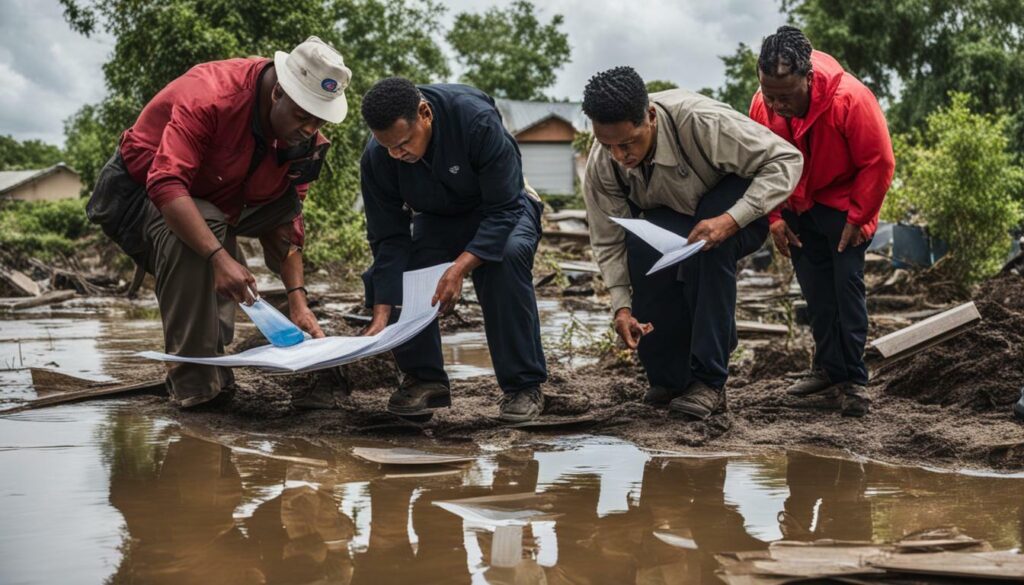
- Contact your mortgage company to discuss relief options and forbearance programs.
- Reach out to other creditors, negotiate payment arrangements, or deferments to avoid negative impacts on your credit score.
- Access aid and grants, such as FEMA assistance, to cover essential costs and minimize additional debt.
- Manage credit usage and debt strategically to rebuild your credit over time.
By following these financial tasks, you can navigate the road to financial stability and successfully repair your credit after a natural disaster.
Preparing for Future Natural Disasters
To minimize the impact of future natural disasters on your credit, it is crucial to be prepared by staying aware of your credit status, establishing automatic payments, understanding over limit rules, and prioritizing expenses.
One important step in credit rebuilding after natural disasters is to stay informed about your credit status. Regularly checking your credit reports can help you identify any potential issues or inaccuracies. You can request a free copy of your credit report from each of the three major credit bureaus once a year, or you can use a reputable credit monitoring service to keep track of any changes in real-time.
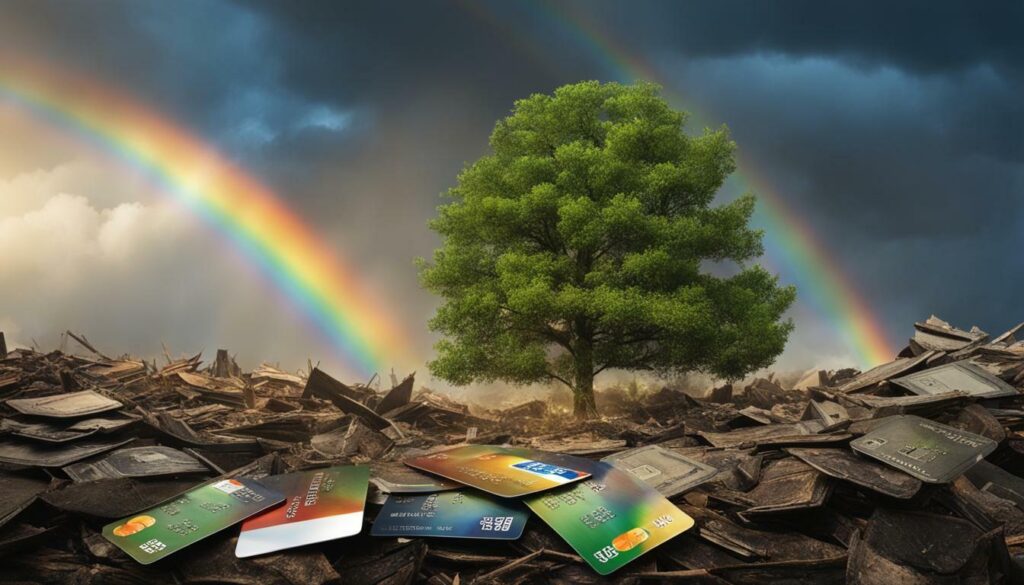
Setting up automatic payments for your bills can also help protect your credit. By authorizing automatic payments, you can ensure that your bills are paid on time, even if you are unable to access your physical mail or go online during a natural disaster. This can prevent late payments and potential damage to your credit score.
Another key consideration is understanding over limit rules. In times of crisis, it can be tempting to rely on credit cards to cover expenses. However, exceeding your credit limit can negatively impact your credit score. Make sure you are aware of your credit limits and use your credit cards responsibly to avoid going over the limit.
Table: Prioritizing Expenses during a Natural Disaster
| Priority Level | Expense |
|---|---|
| High | Food, water, and medication |
| Medium | Utilities, rent or mortgage payments |
| Low | Non-essential purchases, luxury items |
By prioritizing your expenses, you can ensure that you allocate your resources wisely during a natural disaster. This can help you avoid unnecessary financial strain and focus on meeting your immediate needs.
Conclusion
Navigating credit repair after natural disasters requires careful planning and proactive steps to protect your financial stability in the face of adversity. Understanding how natural or declared disasters can impact credit is crucial, as these events can make it difficult to pay bills and force individuals to rely on credit cards. Taking immediate action to protect your credit is essential, starting with contacting lenders to explore hardship options and reaching out to utility and service providers for flexible payment arrangements. Additionally, contacting the IRS to inquire about special tax relief can provide some financial relief during this challenging time.
Monitoring your credit is another important step in the credit repair process. Keep a close eye on your credit report for inaccuracies or suspicious activity. If you come across any incorrect information, it is crucial to dispute it promptly. Regularly monitoring your credit will help ensure ongoing protection and provide peace of mind.
To fully recover from a natural disaster, it is essential to address immediate needs first. Accessing resources from organizations such as FEMA and contacting insurers should be prioritized. Once these immediate needs are met, it’s time to tackle other financial tasks. This includes contacting mortgage companies and creditors to discuss options, seeking student loan forbearance, and being strategic with aid, credit, and debt to navigate the road to financial stability.
Preparing for future natural disasters should also be part of your credit repair plan. Being aware of your credit status, setting up automatic payments to avoid missed payments, understanding over limit rules to prevent further damages, and prioritizing expenses can minimize the impact of future disasters on your credit. By taking these proactive steps, you can protect your credit and financial well-being in the event of future natural disasters.
In conclusion, navigating credit repair after natural disasters requires careful planning and taking proactive measures. Handling immediate needs, contacting creditors early, exploring options, reprioritizing expenses, reviewing credit reports, and considering credit monitoring or identity theft protection services are all crucial steps in the credit repair process. By having a plan in place, you can focus on addressing your immediate needs while protecting your credit and working towards financial stability during challenging times.
FAQ
Q: What steps can I take to protect my credit after a natural disaster?
A: It is important to contact lenders for hardship options, reach out to utility and service providers for flexible payment options, and seek special tax relief from the IRS.
Q: How can I monitor and dispute inaccuracies in my credit after a natural disaster?
A: It is crucial to monitor credit for inaccuracies or suspicious activity, and if any incorrect information is found, it should be disputed. Continuously monitoring credit is also recommended.
Q: What financial tasks should I prioritize during the recovery process after a natural disaster?
A: It is necessary to contact mortgage companies and creditors, seek student loan forbearance, and be strategic with aid, credit, and debt to rebuild financial stability.
Q: How can I prepare for future natural disasters with credit repair in mind?
A: Be aware of your credit status, set up automatic payments, understand over limit rules, and prioritize expenses to minimize the impact of future disasters on your credit.
Ready to Improve Your Credit?
Disputing TUIC errors is step one. Step two? Boost your score by reporting utility payments with CreditScoreIQ.
Get Started Now (Only $1 Trial) →3-bureau reporting • $1M identity insurance • Dark web monitoring

